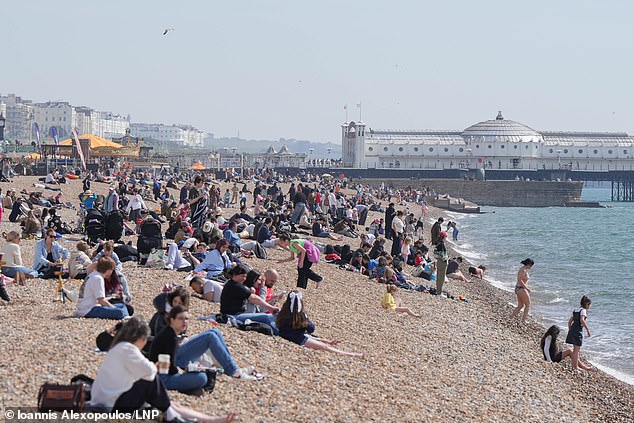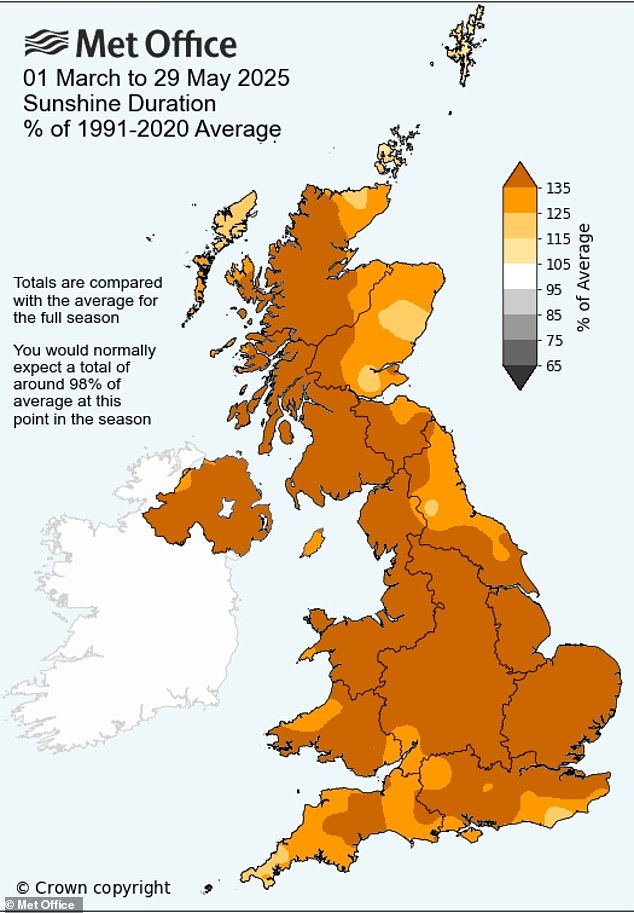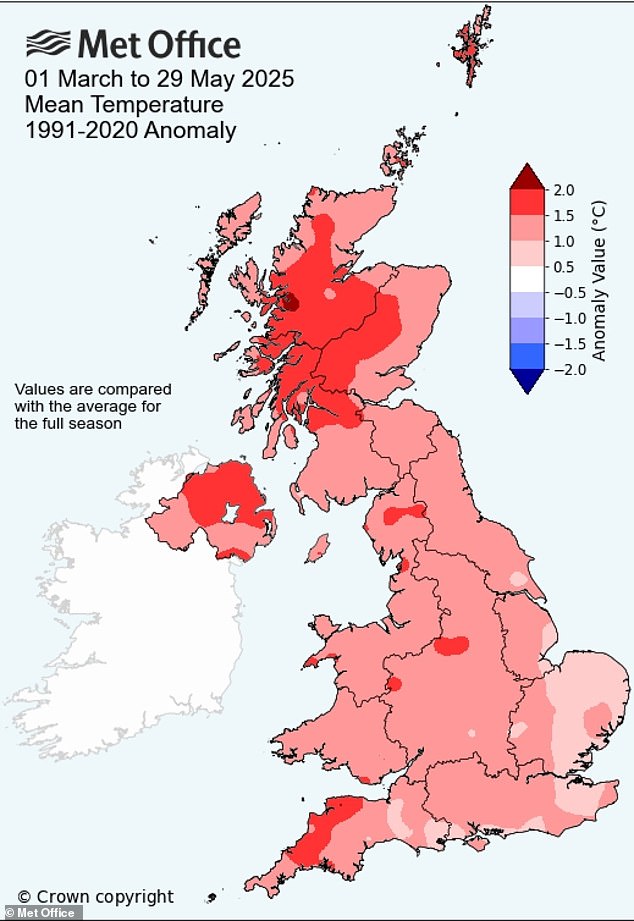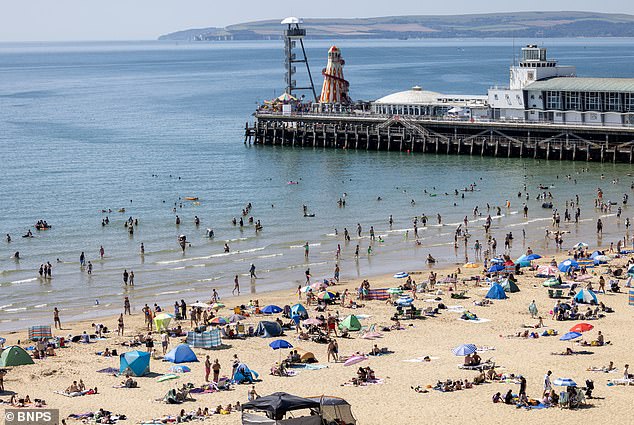The UK is set to experience a summer two times hotter than normal, with an increased risk of heatwaves predicted by the
Met Office
.
The warm forecast follows the country’s sunniest spring on record, with up to 630 hours of sunshine clocked up across the country between March 1 and May 27, in what has also been the driest spring for more than a century.
Temperatures soared to eight degrees above the average for the time of year on Saturday, the last day of meteorological spring, ahead of a scorching summer season.
Now, the Met Office’s latest three-month outlook has predicted that the chance of a hot summer is higher than normal, bringing an increased risk of heatwaves and heat-related impacts to large swathes of the country.
Their estimations show that it is 2.3 times more likely than normal that the UK will bask in high temperatures over
meteorological summer,
which begins on June 1 and ends on August 31.
The average temperatures across the country over those months range from 10-17C, with the south east of England
experiencing the higher averages of 16-17C.
Levels of rainfall and wind speed for the next three months, however, will likely be near average.



The Met Office said: ‘While the current three-month outlook
shows an increased chance of a hot summer
, the temperature signals for this summer are similar to those for recent years and consistent with our warming climate.
‘The increased chance of hotter than average temperatures is not a guarantee of prolonged hot weather or heatwaves, but it does mean that heatwave conditions could be reached at times.
‘However, it’s important to bear in mind that an increased chance of hot conditions could also reflect a mix of hot and cool days, warm nights, or less extreme levels of warmth rather than continual heatwave conditions specifically.’
The long-range forecast analyses the expected general weather patterns over a three month period.
While unable to identify weather for a specific day or week, it provides a broad indication of possible temperature, rainfall and wind speed over the period as a whole.
The UK’s hottest summer on record was in 2018, with an average temperature of 15.7C, with data showing that the UK has not been
predicted a cool summer since 2015
.
The Met Office has previously attributed this growing trend in high temperatures to climate change, while the ongoing marine heatwave in seas around the UK may also be playing a key role in boosting temperatures nationwide.




Sea surface temperatures have been ‘at record highs’ throughout April and May, with some areas up to 4C warmer than usual.
In May, Britain sweltered through the hottest start to the month on record, with highs of 29.3C recorded in Kew Gardens, south-west London,
beating the previous-all time high
for May 1 of 27.4C at Lossiemouth in Moray in 1990.
And,
given the ongoing chance of heatwaves
, the Environment Agency has warned that England is facing the risk of summer drought after the driest start to spring in 69 years has led to low reservoir levels, struggling crops and wildfires.
Mike Childs, Friends Of The Earth head of policy, anticipates that heatwaves are bound to become ‘far more frequent and more intense as climate change takes hold’.
He said: ‘The UK also
needs to go further and faster
to cut its emissions. A new climate action plan is due in October, and ministers must seize the enormous opportunities this will bring.
‘As well as getting UK climate targets back on track, it will also cut bills, create new jobs, insulate our heat-leaking homes – and
put the UK at the forefront of helping to fix our broken planet.’
The London Fire Brigade (LFB) has urged caution around open-water swimming during upcoming summer heatwaves after a 32 per cent increase in water-related incidents in April, compared with the same period last year.



Craig Carter, LFB assistant commissioner for prevention and protection, advised members of the public to ‘think twice before jumping into open water’ during heatwaves.
In the first quarter of 2025, LFB crews responded to 160 water-related incidents, averaging more than 13 per week compared with fewer than 11 a week in 2024.
Meanwhile, the National Fire Chiefs Council (NFCC) said that fire and rescue services in England and Wales have responded to 464 wildfires so far this year.
The organisation warned that most wildfires are caused by human activity, including accidental and deliberate blazes, and that dry weather can worsen the damage caused by fires.
NFCC chairman Phil Garrigan warned that
wildfires are ‘no longer a seasonal hazard’,
but are now becoming a ‘year-round threat to life, property and the environment, driven by the increasing impacts of climate change.’
Read more







